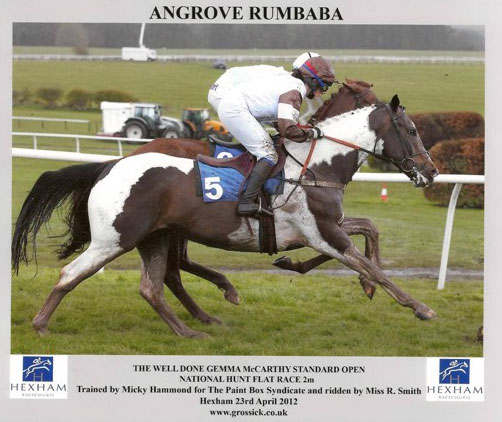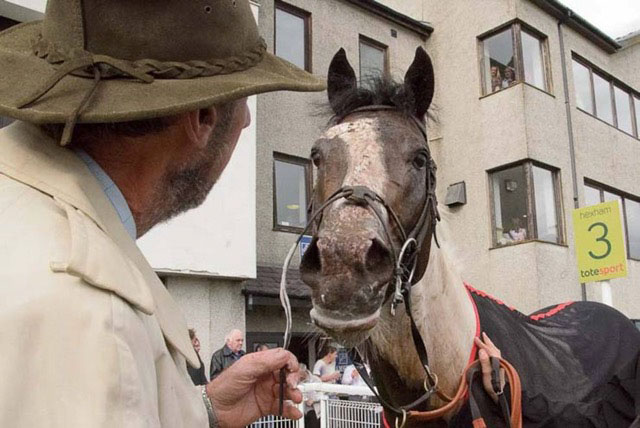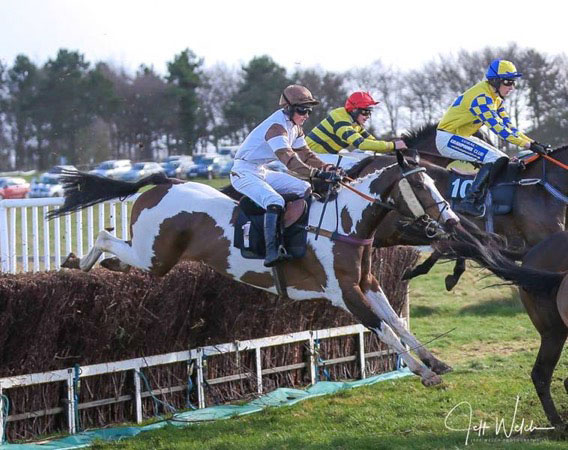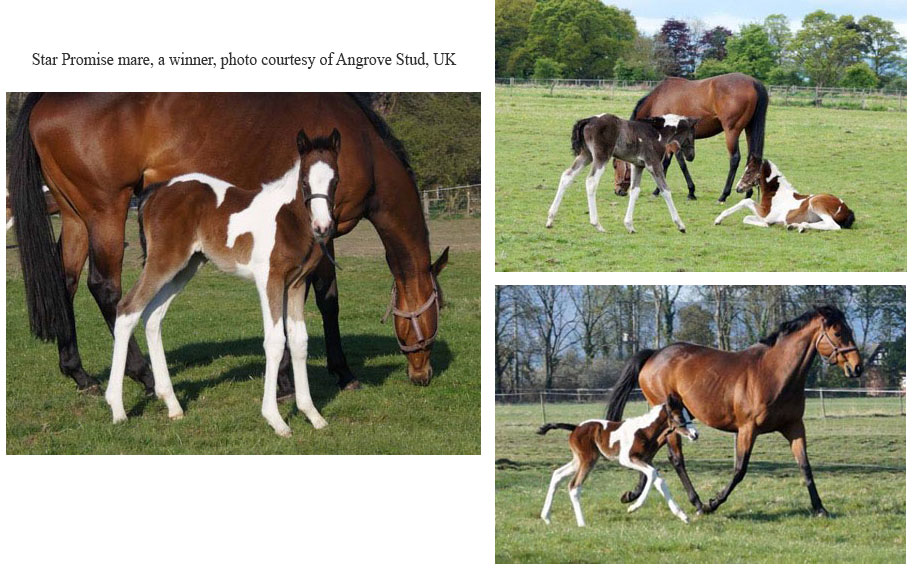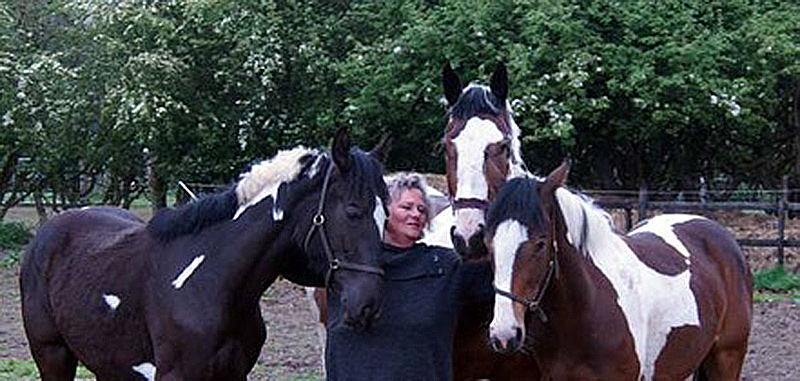
by Patricia N. Saffran
Heather Kitching breeds stunning large spotted Thoroughbreds, at her Angrove Stud, Great Ayton, Yorkshire, UK. She began her breeding program in 2006, after a careful study of horse genetics. She says, “Sabino 1 (SB1) white patterning did not enter into our breeding program and SB1 is not a color variant for Thoroughbreds.”
Ms. Kitching explains, “I did not introduce Quarter Horses into our breeding program. We used horses who were tobiano [white on the legs and large clean white spots on the body] but that carried a high percentage of Thoroughbred. They were eventers carrying Irish blood. Our horses are over 92% Thoroughbred now, and the next generation will take them to 95.6% Thoroughbred. Although Sabino 1 does not appear in the Thoroughbred, there are many variants of the W gene [white patterning] in the Thoroughbred that I know of, at least two.”
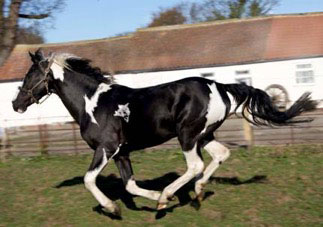
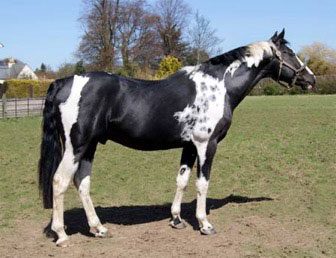
Ms Kitching relies upon Homozygous Tobiano, or TT, horses for her program. She clarifies, “I started the breeding program using the Tobiano gene, known as the King of the color genes, as it’s stable, and the results are very predictable, and 10 years ago, testable. This is when our breeding program began, with the birth of our Homozygous Tobiano stallion, Spottedick, named after the British pudding [dessert]. This birth enabled us to guarantee the next generation to all carry the Tobiano gene. I chose Tobiano as it can be used in very unknowledgeable color genetic people in the Thoroughbred sector safely, which for me is paramount.
“I began the breeding program using a stallion who was a Thoroughbred. He was by a Weatherbys registered stallion. [Weatherbys are the publishers in the UK of The General Stud Book, the first one appearing in 1791.] This enabled him to be registered in the UK Weatherbys Non Thoroughbred stud book. That meant all his progeny out of Thoroughbred mares could also be registered, and therefore be eligible to race in any race on the flat National Hunt or Point-to-Point in the UK.” The achievements for Angrove Stud are on the rise.
